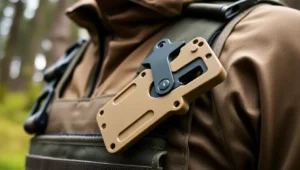As the skies fill with buzzing gadgets and aerial acrobatics, 2025 is shaping up to be the year of the drone. Whether it’s for capturing breathtaking landscapes or delivering snacks right to your door, drones have evolved into the ultimate tech sidekick. But with so many options zipping around, how do you choose the right one without losing your sanity—or your wallet?
Table of Contents
ToggleOverview of Drone Reviews 2025
Drone reviews in 2025 showcase a wide variety of models tailored for different users. Professional-grade drones capture high-resolution imagery suitable for filmmakers, while hobbyist drones offer easy-to-use features for enthusiasts. Many reviews emphasize the importance of flight time, battery capacity, and ease of maintenance.
Reviews highlight significant advancements in technology, such as obstacle avoidance systems and enhanced GPS capabilities. Drones equipped with these features provide a safer flying experience. Battery life across models varies, with some ranging from 20 to 60 minutes per charge, making it essential to consider usage needs.
Further, consumers appreciate drones that support 4K video and high-quality photography. These specifications help ensure the final product meets expectations, especially for content creators. Several reviews discuss the benefits of advanced imaging sensors that allow for better low-light performance, enhancing overall video clarity.
Price categories in 2025 exhibit a distinct correlation between features and cost. Entry-level drones typically start around $300, while high-end models can exceed $2,000. Reviews often include side-by-side comparisons to provide a clearer picture of value for money.
User feedback increasingly emphasizes the significance of post-purchase support. Brands with strong customer service ratings distinguish themselves in user satisfaction. Highlighting warranty periods and repair services offers potential buyers further reassurance.
These factors collectively shape the drone review landscape for 2025, assisting consumers in navigating the myriad of options available.
Top Drones of 2025
Drones in 2025 offer impressive technological advancements across various price ranges. Consumers can find models tailored to specific needs, whether for professional use or casual flying.
High-End Models
High-end drones impress with advanced features necessary for professional applications. These models often include capabilities like 4K video recording, enhanced stabilization, and longer flight times exceeding 50 minutes. Users seeking superior performance appreciate obstacle avoidance systems that promote safer flying experiences. Popular models in this category, priced above $1,500, often attract filmmakers and surveying professionals. Rigorous customer service and support are common among top brands, assuring buyers of a reliable experience post-purchase. Performance metrics in reviews frequently underline battery life, ease of use, and image quality as suggested considerations.
Budget-Friendly Options
Budget-friendly drones make aerial photography accessible to hobbyists. Often priced around $300, these models cater to casual users looking for user-friendly interfaces and decent performance. Many entry-level drones still offer impressive features such as HD video recording and simple one-button takeoff. Flight times for these options generally range between 20 to 30 minutes, making them suitable for short recreational flights. Reviews consistently highlight ease of maintenance and customer service satisfaction as critical factors for budget-minded consumers. Overall, these options provide good value without overwhelming buyers with unnecessary features.
Key Features to Consider
When selecting a drone in 2025, several key features determine its performance and suitability. Prospective buyers should evaluate the following aspects carefully.
Camera Quality
High-resolution cameras play a vital role in drone performance. Many high-end models feature 4K video recording, appealing to professional users. Enhanced stabilization systems ensure smooth footage even in challenging conditions. Budget-friendly drones typically offer HD video capabilities, sufficient for casual users. Additional features include adjustable camera angles and integrated gimbals, enhancing versatility during shoots. The necessity of camera quality varies based on user requirements; thus, comprehensive comparisons can help make a more informed choice.
Flight Time
Flight time significantly impacts overall user experience. Premium drones often provide between 40 to 60 minutes per charge, making them suitable for extensive projects. In contrast, budget drones usually last around 20 to 30 minutes, which may suffice for casual flights. Buyers should consider battery life along with charging time to ensure adequate usage during outings. Users frequently evaluate convenience; hence, removable batteries can also enhance overall experience by facilitating quick replacements and extended flight sessions.
Usability and Portability
Usability remains crucial in drone selection. Many advanced models offer intuitive interfaces, simplifying navigation for newcomers. Portability is equally important, particularly for those who plan to travel with their drones. Lightweight and foldable designs increase convenience during transportation. Drones with user-friendly setup procedures enable quick deployment, which is ideal for spontaneous flights. Understanding specific preferences helps in choosing models that balance performance and ease of use.
User Experience and Feedback
User feedback plays a crucial role in understanding the effectiveness of drones in 2025. Reviews from both experts and customers reflect the evolving landscape and revealing insights.
Expert Opinions
Experts showcase a clear consensus on the advancements in drone technology. They emphasize features like enhanced GPS capabilities and obstacle avoidance systems that greatly improve safety during flights. Many agree that user-friendly interfaces cater to a broader audience, allowing novice users to operate high-end models with confidence. Flight times also receive attention, with premium drones offering durations exceeding 50 minutes. These insights highlight the importance of integrating advanced technology into user experiences.
Customer Reviews
Customer reviews reveal practical insights about product performance. Many users praise budget models for their ease of use and decent footage quality. Flight time remains a significant concern, with customers emphasizing the need for drones that meet their specific usage requirements. Satisfaction regarding customer service also stands out, as users appreciate brands that provide prompt support. High-resolution camera capabilities receive frequent commendation, especially among professionals. Overall, consumer feedback drives trends in drone design and functionality.
Future Trends in Drone Technology
Advancements in drone technology drive impressive trends as 2025 approaches. Companies increasingly focus on integrating artificial intelligence into drones. AI enhances capabilities such as autonomous navigation and real-time data processing, making drones smarter.
Safety remains a priority, with collision-avoidance technology improving. Many models now include advanced sensors that detect obstacles, reducing crash incidents. Enhanced GPS accuracy plays a significant role in precise positioning and control.
Battery technology is evolving rapidly. Some manufacturers are developing batteries that extend flight times up to 60 minutes, addressing a common user concern. Efforts to create fast-charging solutions further support user convenience, allowing for quicker turnaround times between flights.
Connectivity features are becoming more sophisticated. Drones equipped with 5G technology promise faster data transmission and enhanced streaming capabilities. Users can expect higher quality live feeds, vital for professionals who depend on real-time visuals.
Easier drone operation is another emerging trend. Many devices now offer intuitive controls, simplifying the learning curve for novice users. Drone manufacturers often prioritize user experience, helping casual flyers become comfortable with advanced features.
Sustainability is also gaining traction within the industry. Eco-friendly drones utilizing electric-powered systems are increasingly common, appealing to environmentally conscious consumers. These models help reduce carbon footprints while ensuring efficient performance.
Regulatory frameworks are adapting to new technologies. Governments worldwide are establishing guidelines to manage drone usage safely. Compliance with regulations is essential for manufacturers and users, ensuring a safer environment for all.
The overall landscape of drone technology in 2025 reflects a combination of innovation and user-centric design principles. Each development prioritizes safety, usability, and enhanced performance, aligning with the diverse needs of users in various sectors.
Conclusion
As drone technology continues to evolve in 2025 consumers are presented with an impressive array of options tailored to their needs. Whether they’re professionals seeking high-end features or casual users looking for budget-friendly models there’s a drone for everyone. The advancements in battery life and safety features enhance the overall flying experience making it easier for users to navigate their choices.
With user feedback and expert reviews guiding decision-making potential buyers can confidently select the right model. As the industry progresses it’s clear that innovation and user-centric design will shape the future of drone technology ensuring both safety and performance remain at the forefront.





